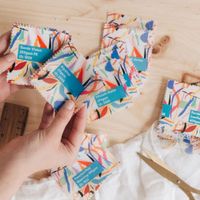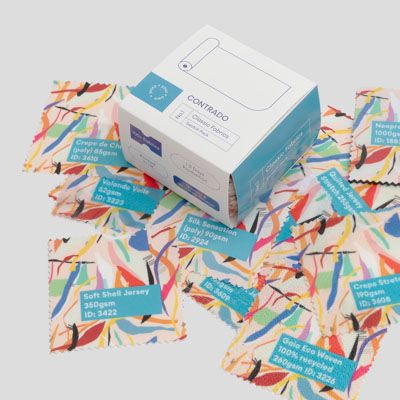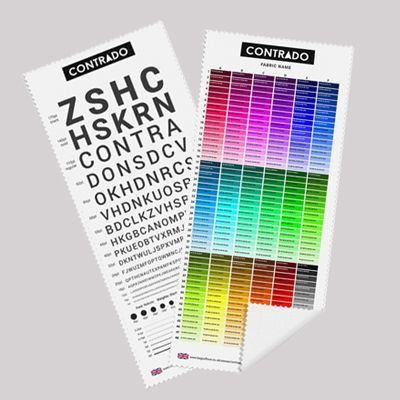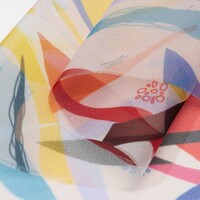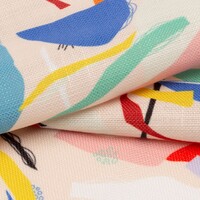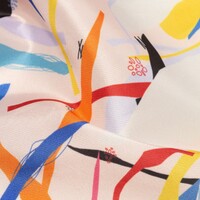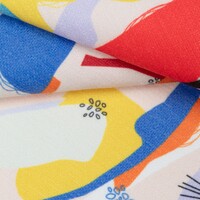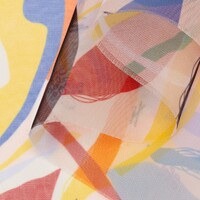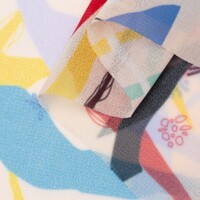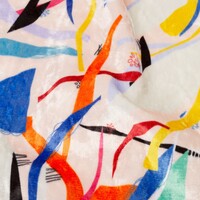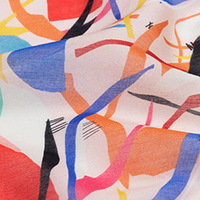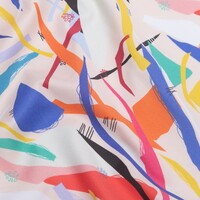Printed Curtain Fabric: How it Works
Step 1: Calculate dimensions
When measuring your window space, you need to account for the pleating/fullness. So for example, if your window is 1m wide, you'll need approximately 2m of curtain fabric so it doesn't look like a flat sheet when pulled across. How you plan to hang your curtains is also an important factor here. For standard pencil pleat heading, we'd suggest doubling the fullness; for eyelets, you'd need between 1.5 to 2.25 times fullness (make sure you have an even number of eyelets).
Where you plan to hang your curtains will influence the length. If they're to go within a window recess, the end of the fabric should sit just above the windowsill. For curtains hanging outside a recess, aim for 10cm below the windowsill. If you're making floor length curtains, you can easy let them finish just above the floor for easy pulling, sitting on the floor to keep draughts out or make them longer to add weight.
NB: Fabric shrinkage can be 2-6%, so we advise accounting for an additional 1cm of fabric all around, for hemming and in case of any shrinkage.
Step 2: Know the drop of your pattern
Check your pattern to see if it has a half drop repeat, half repeat, half drop pattern or whether it matches at the edges. Fabrics are limited to the width of the roll, so in cases where curtains are particularly wide, you will need to stitch separate panels together either vertically or even horizontally, resulting in your pattern meeting at the edges. (Within our design system, you can add a drop pattern/tile effect to your pattern).
Step 3: Start your design
Now you know the dimensions needed, you can begin to create your custom printed curtain fabric. Upload your design, edit it, rearrange it etc to ensure it's exactly as you want it. The preview shows the full width and length, without the pleating.
Curtain Fabric Edge Finishes
- As it comes. We roughly cut around your image, leaving a simple scissor cut (perhaps uneven white fabric border).
- Hem with thread. We can hem your fabric with a choice of black or white thread. Please allow 1-2 days additional production time. See below for information on how hemming affects the size of your print.
- Cut on the line. We neatly and precisely cut on the edge of your image.
Important: please read our full guidelines on shrinkage and hemming to avoid disappointment. This is essential for when you measure up your material.
How to Care for Your Curtain Material
Our Suede Vision material for curtains can be machine washed without loss of colour at 30°. Iron on a low heat. For everyday cleaning, use a curtain nozzle attached to your vacuum cleaner to remove dust and fluff.
Due to the delicate nature of the Mulmul Soft Muslin fabric, some pulls are to be expected and this is not out of the ordinary.
Important: If you are making curtains for a non domestic setting, i.e public space, university, hotel, it will be a requirement that the curtains are certified as fire rated. Suede Vision is fire rated to BS 5867 - 2:2008.
Printed Curtain Fabric: How it Works
Step 1: Calculate dimensions
When measuring your window space, you need to account for the pleating/fullness. So for example, if your window is 1m wide, you'll need approximately 2m of curtain fabric so it doesn't look like a flat sheet when pulled across. How you plan to hang your curtains is also an important factor here. For standard pencil pleat heading, we'd suggest doubling the fullness; for eyelets, you'd need between 1.5 to 2.25 times fullness (make sure you have an even number of eyelets).
Where you plan to hang your curtains will influence the length. If they're to go within a window recess, the end of the fabric should sit just above the windowsill. For curtains hanging outside a recess, aim for 10cm below the windowsill. If you're making floor length curtains, you can easy let them finish just above the floor for easy pulling, sitting on the floor to keep draughts out or make them longer to add weight.
NB: Fabric shrinkage can be 2-6%, so we advise accounting for an additional 1cm of fabric all around, for hemming and in case of any shrinkage.
Step 2: Know the drop of your pattern
Check your pattern to see if it has a half drop repeat, half repeat, half drop pattern or whether it matches at the edges. Fabrics are limited to the width of the roll, so in cases where curtains are particularly wide, you will need to stitch separate panels together either vertically or even horizontally, resulting in your pattern meeting at the edges. (Within our design system, you can add a drop pattern/tile effect to your pattern).
Step 3: Start your design
Now you know the dimensions needed, you can begin to create your custom printed curtain fabric. Upload your design, edit it, rearrange it etc to ensure it's exactly as you want it. The preview shows the full width and length, without the pleating.
Curtain Fabric Edge Finishes
- As it comes. We roughly cut around your image, leaving a simple scissor cut (perhaps uneven white fabric border).
- Hem with thread. We can hem your fabric with a choice of black or white thread. Please allow 1-2 days additional production time. See below for information on how hemming affects the size of your print.
- Cut on the line. We neatly and precisely cut on the edge of your image.
Important: please read our full guidelines on shrinkage and hemming to avoid disappointment. This is essential for when you measure up your material.
How to Care for Your Curtain Material
Our Suede Vision material for curtains can be machine washed without loss of colour at 30°. Iron on a low heat. For everyday cleaning, use a curtain nozzle attached to your vacuum cleaner to remove dust and fluff.
Due to the delicate nature of the Mulmul Soft Muslin fabric, some pulls are to be expected and this is not out of the ordinary.
Important: If you are making curtains for a non domestic setting, i.e public space, university, hotel, it will be a requirement that the curtains are certified as fire rated. Suede Vision is fire rated to BS 5867 - 2:2008.




